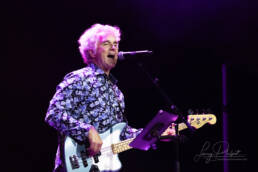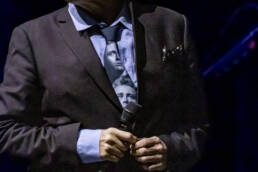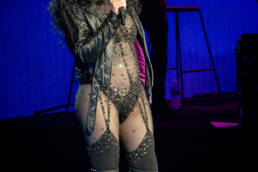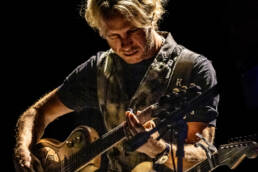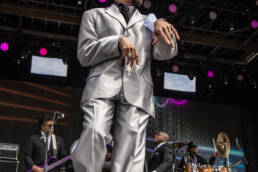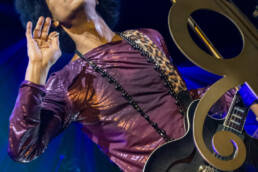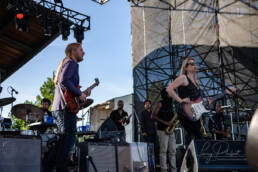The Cure: The Goth-Pop Alchemists Who Painted the Dark with Light

The Cure: The Goth-Pop Alchemists Who Painted the Dark with Light
Imagine a lanky teen in a quiet English suburb, his black hair a mess, strumming a guitar to drown out the humdrum of school and drizzle. For The Cure, music wasn’t just an outlet—it was a potion, a way to brew melancholy and hope into a sound that’s haunted us for decades. From Crawley’s cul-de-sacs to the world’s dimmest corners, Robert Smith and his ever-shifting crew spun a web of gloom and glitter. Here’s the tale of how a misfit’s muse became a cure for the ordinary.
The Shadow That Shaped the Sound
The Cure’s spark flickered in Robert Smith’s restless soul. Born April 21, 1959, in Blackpool, England, he moved to Crawley at three, a shy kid in a Catholic family. Music hit him young—Bowie, Hendrix, and The Beatles stirred something wild. At 14, he formed Easy Cure with schoolmates, driven by a need to escape the beige of suburbia. “I wanted to feel everything,” he’d say, “even the sad stuff.” Punk’s raw edge and post-punk’s mood lit the fuse—by 17, he’d ditched “Easy” for The Cure, a name hinting at the balm he sought in sound. Music was his rebellion, his way to scream and sigh at once.
The Boy Who Built the Band
Smith’s Crawley years were a blur of boredom and brilliance. With dad a milkman and mom a secretary, he dodged norms—suspended from school for “weirdness,” he found kin in Michael Dempsey (bass) and Lol Tolhurst (drums). The Cure debuted in ’77, signing to Fiction Records by ’79 with Three Imaginary Boys. Early gigs were scrappy—Smith’s voice a wail, his hair a growing tangle. Marriage to Mary Poole in ’88 anchored him, but the band churned: Dempsey left in ’79, Simon Gallup (bass) joined in ’80, and Tolhurst shifted to keys before exiting in ’89.
Through 40+ members—Porl Thompson, Boris Williams, Roger O’Donnell among them—Smith’s the constant, a gothic Pied Piper. In 2025, he’s still steering, eyeliner intact.

The Career That Wove a Web
The Cure’s arc is a tapestry of dark and dazzle. Seventeen Seconds (1980) and Faith (1981) birthed goth—brooding, sparse. Pornography (1982) plunged deeper, a critical darling despite its gloom. Then came the pivot: The Lovecats (1983) and The Head on the Door (1985) added pop sheen, “Close to Me” a jangle amid the murk. Disintegration (1989)—Smith, Gallup, Tolhurst, O’Donnell, Williams—hit peak majesty, “Lovesong” a global weepie.
The ‘90s waned with Wish (1992), “Friday I’m in Love” a bright spot. Lineup flux—Gallup out in ’92, back in 2001—tested them, but Bloodflowers (2000) and 4:13 Dream (2008) kept the faith. TV nods (Top of the Pops), film scores (The Crow), and a 2019 Rock Hall induction crown them. In 2025, Songs of a Lost World looms, Smith teasing a return to the abyss.
- Bands: The Cure, Easy Cure
- Classic Bandmates: Robert Smith (vocals/guitar), Simon Gallup (bass), Lol Tolhurst (drums/keys), Roger O’Donnell (keys), Perry Bamonte (guitar)
- Awards: Rock and Roll Hall of Fame (2019), BRIT Awards, Grammy noms
Biggest Songs:
- “Lovesong” – Written by Robert Smith and bandmates
- “Friday I’m in Love” – Written by Robert Smith and bandmates
- “Just Like Heaven” – Written by Robert Smith and bandmates
- “Close to Me” – Written by Robert Smith
The Storms in the Static
The Cure’s path has its shadows. Smith’s 1989 near-exit—exhausted by Disintegration’s toll—rattled fans; Tolhurst’s ousting that year (booze and bitterness) sparked lawsuits. A 1992 Gallup-Smith rift (a pub brawl rumor persists) paused their pulse, and Smith’s “we’re done” threats—post every album—tease retirement. His 2018 Trump jab (“He’s a twat”) irked conservatives, but he’s unfazed. Personal woes—his brother’s 2018 death—fuel his muse, not his scandals. The Cure’s chaos is quiet, a storm in their sound.
The Echo Still Haunting
From Crawley’s gloom to a global stage, The Cure turned a boy’s sigh into a sonic spell. They’re not just a band—they’re a mood, a black-lipsticked balm for the lost. In 2025, Smith’s still weaving, proving why he started: to feel it all, and make us feel it too, one tear at a time.

